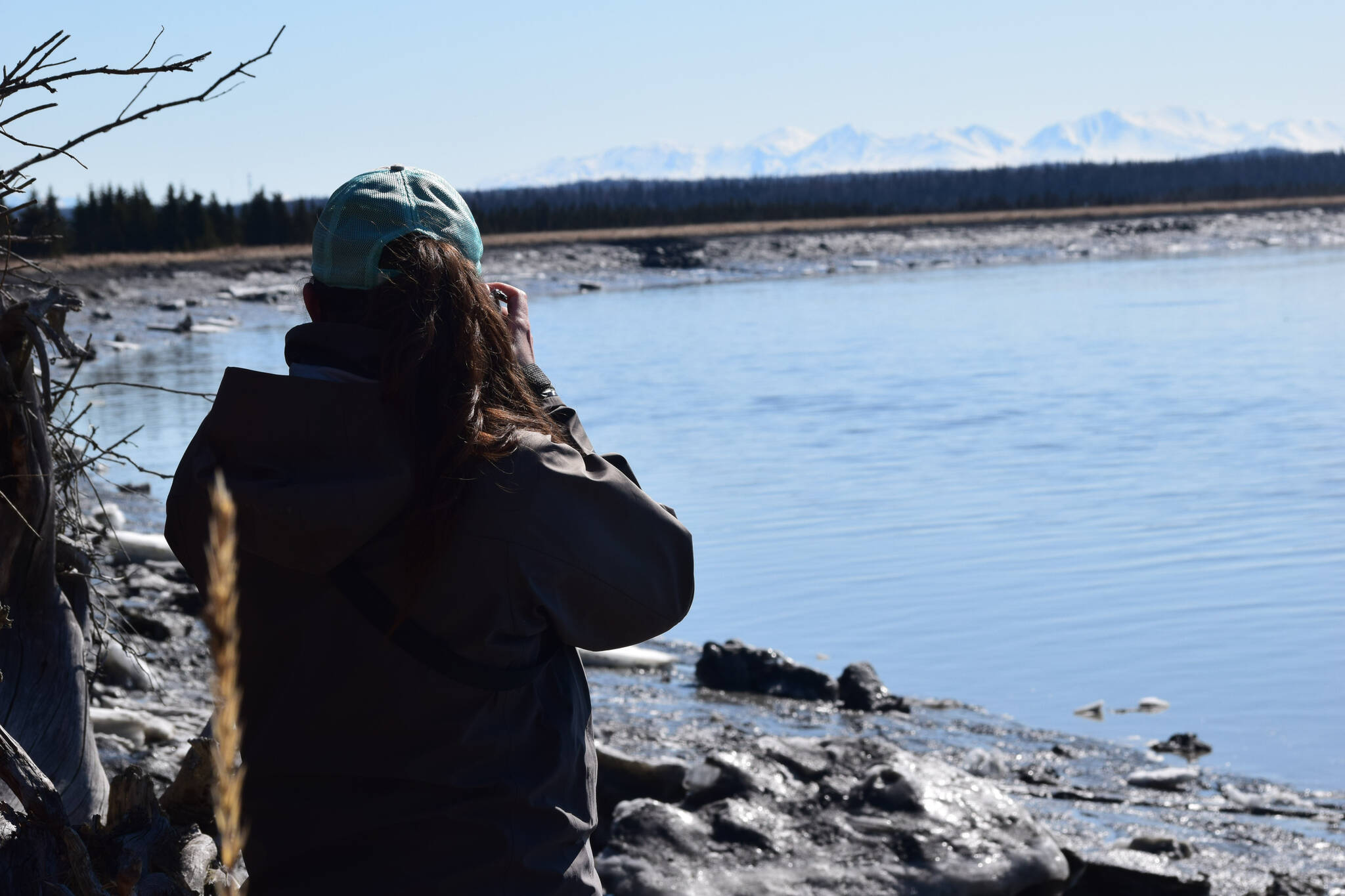This month, the Alaska Beluga Monitoring Program launched into its fall monitoring season, enlisting and training volunteer community scientists to collect information about the Cook Inlet beluga population.
Program manager and data analyst Madison Kosma said during a volunteer orientation presentation that Cook Inlet belugas are one of five geographically and genetically isolated beluga populations in Alaska. They’re the only of those populations that are endangered.
The historical average population was 1,300 whales, she said. In 2018, the estimated population was 279. As of 2022, estimates have the population at 331, but Kosma explained during the orientation that it’s not yet possible to say for certain whether the population is actually seeing recovery.
Community scientists are local volunteers who take shifts at different sites around Cook Inlet, including two on the central Kenai Peninsula at the Kenai and Kasilof rivers. According to the orientation presentation, sessions are two hours long, and the volunteers record information about belugas seen during that window. That includes how long belugas could be seen, what they were up to, what color they were, and nearby activity by humans or other marine animals.
Sourcing participants and observers from the community, Kosma said in an email to the Clarion, means tapping into the kind of local insight only available to residents with firsthand experience. Kosma said that experience, as well as the passion of volunteers “fueled by curiosity,” has driven the program as it has developed and seen success.
“The fusion of standardized data collection protocols essential for NOAA’s management endeavors with local knowledge and the dedication of Alaskan community members and organizations is the foundation and fuel of our program,” she said.
The Alaska Beluga Monitoring Program is, as of this year, a full program led by National Oceanic and Atmospheric Administration Fisheries — formerly a partnership. It “facilitates collaboration between organizations, communities, and individuals to collect standardized shore-based observational data on Cook Inlet beluga whales,” its website says.
Kosma is a sub-contractor for NOAA who coordinates the program. Partners include the Alaska Wildlife Alliance, Alaska Wildlife Conservation Center, Beluga Whale Alliance, Defenders of Wildlife Alaska and Kenai Peninsula College.
NOAA “can and does use the information collected” to inform management and conservation of the Cook Inlet beluga whales, Kosma said.
“Since its inception in 2019, the program has undergone a remarkable journey. Through diligent efforts, we have enhanced both the data collection process and the training of volunteers, drawing from the wisdom gained over the past four years,” Kosma said in an email to the Clarion. “Across seven seasons, 322 observers have dedicated 3,481 hours of monitoring on 597 days. August 1st was the start of our fifth fall season, and it is off to a great start.”
Kosma said the program is always seeking more volunteers. The program runs at least one monitoring session at each of its six sites each day, but some can have as many as four based on tides and available sunlight. Having more than just one observer at each session is also beneficial — adding to the enjoyment and adding “vigilant eyes on the water.”
To get involved, visit the program website and view the recorded orientation presentation. That presentation offers a primer for what community scientists will be looking for, and what will be required of them to collect data.
It also includes tips about successfully identifying the whales — “There’s a reason these whales are white.”
After going through the orientation video, observers will register with a volunteer form and attend one session under the supervision of a lead observer, then will be able to take on sessions solo.
For more information about the Alaska Beluga Monitoring Program, or to get involved, visit akbmp.org.
Reach reporter Jake Dye at jacob.dye@peninsulaclarion.com.

